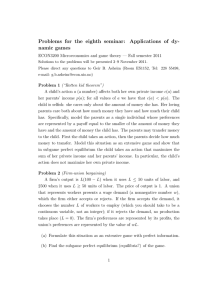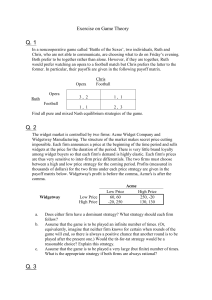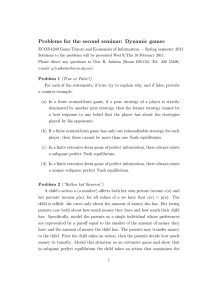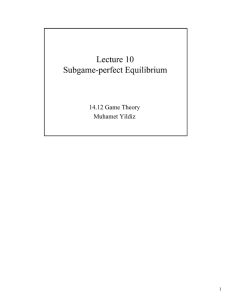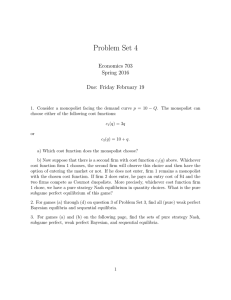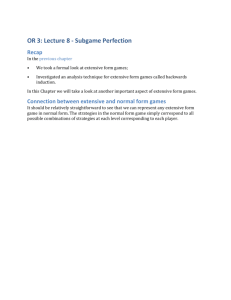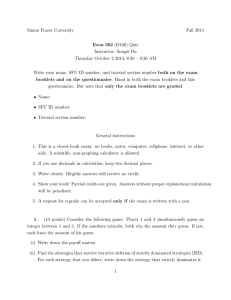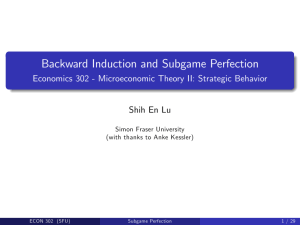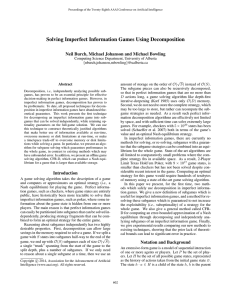Econ 302 Assignment 5 — Solution 1. Part i:
advertisement
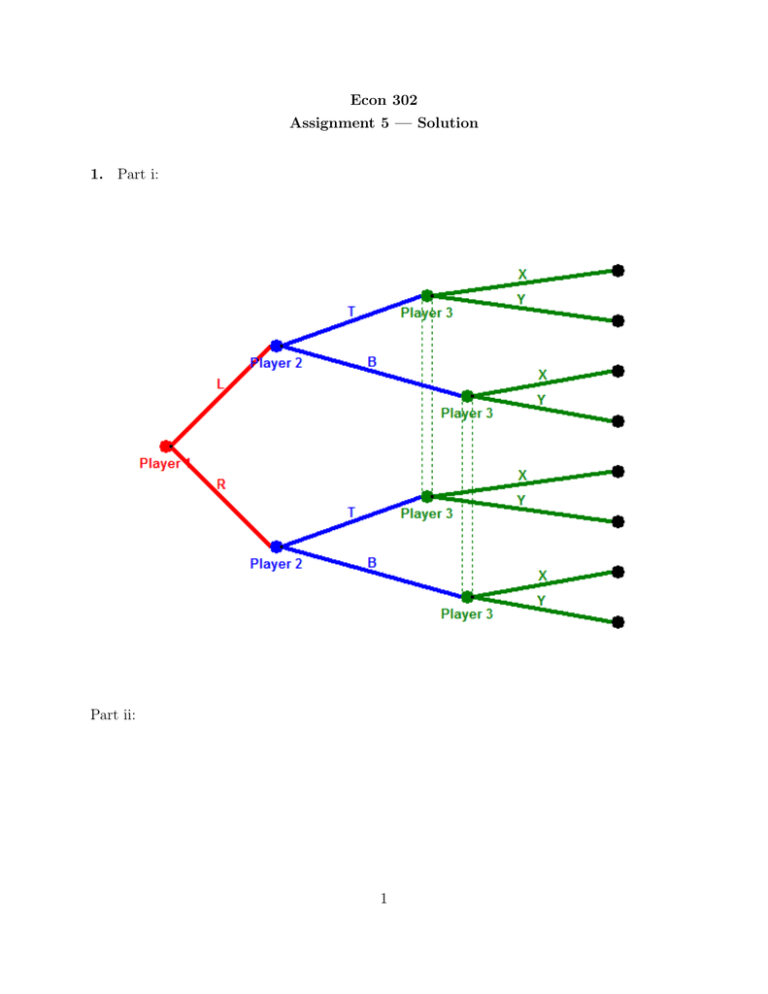
Econ 302 Assignment 5 — Solution 1. Part i: Part ii: 1 Part iii: 2 2. 3 There are two subgames: everything that follows the branch B (which is a proper subgame), and the whole game. Clearly, in any SPE player 2 plays L if B is played. For the rest of the game, we can make the following matrix: IL OL T 1, 1 0, 0 M 0, 0 1, 1 B 0.6, 0.6 0.6, 0.6 The pure-strategy Nash equilibria in the above matrix game are (T, IL) and (M, OL), which are the pure-strategy SPE of the original game (as represented by the tree). (T, IR) and (M, OR) are Nash equilibria that are not subgame perfect. 3. In the subgame where n firms had chosen to enter the market, the (symmetric) Nash 1 42. In this equilibrium, the market price is equilibrium is each of them producing q ∗ = n+1 n 422 P = 45 − n+1 42, and the profit of each firm is Π = (n+1) 2 − 4. Notice that if n = 20, each firm makes zero profit. Given that firms play the above Nash equilibrium in the subgame, there are two classes of pure-strategy subgame perfect equilibria: 1. 19 firms enter in the first stage, and in any subgame each firm that have entered 1 42, where n is the number of firms entered in that subgame. In this produces q ∗ = n+1 SPE, each of the 19 firms enjoys a profit of 0.41. 2. 20 firms enter in the first stage, and in any subgame each firm that have entered 1 produces q ∗ = n+1 42, where n is the number of firms entered in that subgame. In this SPE, each of the 20 firms gets zero profit. (Add explanations!) 4

